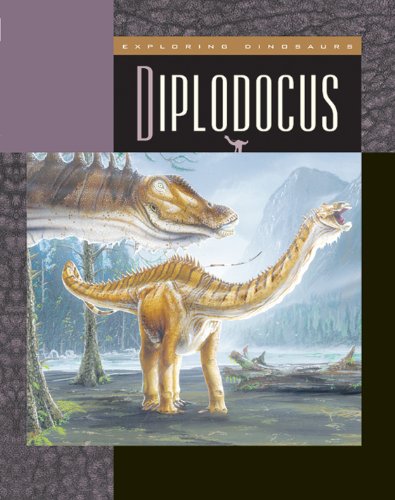-
Psittacosaurus
Susan H. Gray
language (Core Learning Library, Jan. 1, 2014)In 1922, a team of scientists endured many hardships while traveling to Mongolia in search of dinosaurs. Readers will reap the benefits of their trials as they learn all about the new dinosaur they discovered there--the Psittacosaurus.
-
Allosaurus
Susan H. Gray, Todd Marshall
eBook (Core Learning Library, Jan. 1, 2014)Long ago, a once-mighty Allosaurus stalked the land searching for helpless prey for dinner, too sick to battle stronger dinosaurs. Millions of years later, scientists discovered the bones of this 'different lizard' in Wyoming and named him Big Al. Read how Big Al helped them learn more about Allosaurus and its days on Earth.
-
Diplodocus
Susan H. Gray, Todd Marshall
eBook (Core Learning Library, Jan. 1, 2014)The massive Diplodocus was one of the largest creatures around when it walked the Earth. When paleontologists discovered its fossilized bones sixty-five million years later, Diplodocus captured the imaginations of some of the richest and most powerful men of the time. Find out why this 'double-beamed' dinosaur continues to fascinate scientists and readers alike to this day.
-
Triceratops
Susan H. Gray, Todd Marshall
eBook (Core Learning Library, Jan. 1, 2014)In 1888, scientists searching for dinosaur bones found an enormous head like none they had ever seen before. They named it Triceratops, meaning 'three-horned face.' As they discovered more bones, they learned more and more about this 'new' dinosaur. With this book, you too can go back in time millions of years to explore the world of Triceratops.
-
Pterosaurs
Susan H. Gray
eBook (Core Learning Library, Jan. 1, 2014)Millions of years ago, our planet was home to several fantastic creatures that now merely exist in the movies or as part of hardened fossil remains. Pterosaurs introduces young readers to the flying reptiles that soared through prehistoric skies while dinosaurs lumbered below.
-
Glyptodonts
Susan H. Gray
eBook (Core Learning Library, Jan. 1, 2014)What prehistoric animal was the size of a small car and had a thick shell that covered its back, neck, and sides? Glyptodonts provides an introduction to these unusual creatures that were the ancient relatives of modern-day anteaters and armadillos.
-
Troodon
Susan H. Gray
eBook (Core Learning Library, Jan. 1, 2014)Troodon's name comes from words meaning 'wounding teeth,' which seems very appropriate for this mighty dinosaur! Follow scientists as they uncover how Troodon spent its time on earth so many millions of years ago.
-
Coelophysis
Susan H. Gray, Todd Marshall
eBook (Core Learning Library, Jan. 1, 2014)Why were hundreds of Coelophysis fossils found together at a site in New Mexico? Did Coelophysis live in a herd? Was there more than one kind of Coelophysis? And why did Coelophysis die out? Explore the many mysteries that still surround this early dinosaur, hundreds of millions of years after it disappeared.
-
Trilobites
Susan H. Gray
eBook (Core Learning Library, Jan. 1, 2014)Among the earliest animals to live in Earth's oceans, trilobites survived for 300 million years! Young readers will learn about this diverse group of prehistoric arthropods who roamed the sea nearly twice as long as dinosaurs dominated the land.
-
Stegosaurus
Susan H. Gray, Todd Marshall
language (Core Learning Library, Jan. 1, 2014)Have you ever tried putting together a puzzle without knowing what it would look like when you had finished? If you have, you know what Othniel Charles Marsh felt like as he put together the bones and plates of a Stegosaurus he had discovered. Follow Stegasaurus from its life on Earth millions of years ago to its reconstruction in a museum--bones, plates, and all!
-
Crinoids and Blastoids
Susan H. Gray
eBook (Core Learning Library, Jan. 1, 2014)Today's oceans are home to a wide variety of life, but what kind of mysterious aquatic creatures lurked in the water millions of years ago? Crinoids and Blastoids teaches kids about the plantlike animals that inhabited ancient seas and were the early relatives of sea urchins and sea stars.
-
The Ancient Euphrates
Charnan Simon
language (Core Learning Library, Jan. 1, 2014)Buranunu, Perath, and Furat are just a few of the names that have been given to this ancient river. Follow the Euphrates as it winds its way through the cradle of civilization and explore what makes this river such an important and distinctive part of our modern world.